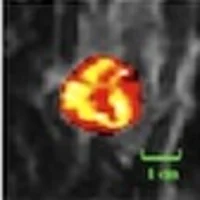The U.S. Preventive Services Task Force (USPSTF) has published final recommendations on screening for breast cancer following an in-depth review of the science on the benefits and harms of screening mammography, and a detailed review of input received from the public and healthcare professionals on its 2015 draft recommendation. The recommendations, published in Annals of Internal Medicine, update the USPSTF's previous guideline issued in 2009.
The updated recommendations confirm that screening mammography is effective in reducing deaths due to breast cancer among women ages 40 to 74 years. The greatest benefit of screening mammography occurs in women ages 50 to 74 years, and these women get the best balance of benefits to harms when screening is done every two years. This is a B recommendation.
For women in their 40s, the decision to start screening should be an individual one, taking into account a woman's health history, preferences, and how she values the potential benefits and harms. Women who have a mother, sister, or daughter with breast cancer may benefit more than average-risk women by beginning screening between the ages of 40 and 49 years. This is a C recommendation.
See Also: Making Breast Screening Even Safer
The USPSTF says that evidence is insufficient to determine the balance of benefits and harms in three important areas:
Due to this lack of evidence, the USPSTF is unable to make a recommendation for or against these services. These are I statements. The USPSTF strongly encourages additional research in these areas and notes that women should speak to their doctors to determine what is best for their individual needs.
In a related commentary, Christine Laine, MD, MPH (Editor-in-Chief, Annals of Internal Medicine), Kay Dickersin, PhD (Johns Hopkins), and Cynthia Mulrow, MD, MSc (University of Texas) write: "The USPSTF did a difficult job well, considering updated evidence reviews, a fuller panoply of potential harms, and tradeoffs of different screening strategies. The science led the USPSTF to conclude that the following recommendation (originally issued in 2009) still stands: Each average-risk woman between the ages of 40 and 49 years should make her own decision about whether to have a mammogram, based on her personal balancing of the benefits and harms of screening (a grade 'C' recommendation)."
Although for many years the dogma was that women should have mammograms “once a year for a lifetime” starting at age 40 years, the authors note that current evidence shows that the balance of risks and benefits of screening, particularly among women in their 40s, warrants more nuanced decision making. "Potential harms of overdiagnosis and overtreatment of lesions with little progressive potential and harms of false-positive screening results with unnecessary biopsies and multiple repeated examinations must be considered," they add.
See Also: Study: False-Positive Mammograms May Point to Increased Breast Cancer Risk
Further research published in Annals of Internal Medicine shows that false-positive results and additional imaging are common among younger women and women with risk factors for breast cancer who are screened with digital mammography. Biopsy occurs less often and rates of false-negative screening results are low. The analysis was used to inform updated clinical practice recommendations from the USPSTF. The research was conducted by Heidi D. Nelson, MD, Oregon Health & Science University and Providence Health & Services, Portland, Oregon, and colleagues.
Researchers used registry data for more than 400,0000 women aged 40 to 89 to estimate rates of false-positive and false-negative digital mammography results and subsequent imaging and biopsies among a general population of women undergoing screening with digital mammography. They found that false-positives and recommendations for additional imaging were highest among younger women (ages 40 to 49). Risk factors for breast cancer, such as positive family history, previous biopsy, high breast density, and low body mass index for younger women, were associated with higher risk for false-positive result.
Source: American College of Physicians
Image credit: Flickr.com
The updated recommendations confirm that screening mammography is effective in reducing deaths due to breast cancer among women ages 40 to 74 years. The greatest benefit of screening mammography occurs in women ages 50 to 74 years, and these women get the best balance of benefits to harms when screening is done every two years. This is a B recommendation.
For women in their 40s, the decision to start screening should be an individual one, taking into account a woman's health history, preferences, and how she values the potential benefits and harms. Women who have a mother, sister, or daughter with breast cancer may benefit more than average-risk women by beginning screening between the ages of 40 and 49 years. This is a C recommendation.
See Also: Making Breast Screening Even Safer
The USPSTF says that evidence is insufficient to determine the balance of benefits and harms in three important areas:
- the benefits and harms of screening women age 75 and older;
- adjunctive screening in women with dense breasts;
- and the effectiveness of 3D mammography for the detection of breast cancer.
Due to this lack of evidence, the USPSTF is unable to make a recommendation for or against these services. These are I statements. The USPSTF strongly encourages additional research in these areas and notes that women should speak to their doctors to determine what is best for their individual needs.
In a related commentary, Christine Laine, MD, MPH (Editor-in-Chief, Annals of Internal Medicine), Kay Dickersin, PhD (Johns Hopkins), and Cynthia Mulrow, MD, MSc (University of Texas) write: "The USPSTF did a difficult job well, considering updated evidence reviews, a fuller panoply of potential harms, and tradeoffs of different screening strategies. The science led the USPSTF to conclude that the following recommendation (originally issued in 2009) still stands: Each average-risk woman between the ages of 40 and 49 years should make her own decision about whether to have a mammogram, based on her personal balancing of the benefits and harms of screening (a grade 'C' recommendation)."
Although for many years the dogma was that women should have mammograms “once a year for a lifetime” starting at age 40 years, the authors note that current evidence shows that the balance of risks and benefits of screening, particularly among women in their 40s, warrants more nuanced decision making. "Potential harms of overdiagnosis and overtreatment of lesions with little progressive potential and harms of false-positive screening results with unnecessary biopsies and multiple repeated examinations must be considered," they add.
See Also: Study: False-Positive Mammograms May Point to Increased Breast Cancer Risk
Further research published in Annals of Internal Medicine shows that false-positive results and additional imaging are common among younger women and women with risk factors for breast cancer who are screened with digital mammography. Biopsy occurs less often and rates of false-negative screening results are low. The analysis was used to inform updated clinical practice recommendations from the USPSTF. The research was conducted by Heidi D. Nelson, MD, Oregon Health & Science University and Providence Health & Services, Portland, Oregon, and colleagues.
Researchers used registry data for more than 400,0000 women aged 40 to 89 to estimate rates of false-positive and false-negative digital mammography results and subsequent imaging and biopsies among a general population of women undergoing screening with digital mammography. They found that false-positives and recommendations for additional imaging were highest among younger women (ages 40 to 49). Risk factors for breast cancer, such as positive family history, previous biopsy, high breast density, and low body mass index for younger women, were associated with higher risk for false-positive result.
Source: American College of Physicians
Image credit: Flickr.com
References:
Siu AL, on behalf of the U.S. Preventive Services Task Force (2016)
Screening for Breast Cancer: U.S. Preventive Services Task Force Recommendation Statement. Ann Intern Med. [Epub ahead of print 12
January 2016] doi:10.7326/M15-2886
Laine C, Dickersin K, Mulrow C (2016) Time to Douse the Firestorm Around Breast Cancer Screening. Ann Intern Med. [Epub ahead of print 12 January 2016] doi:10.7326/M15-2978
Nelson HD et al. (2016) Factors Associated With Rates of False-Positive and False-Negative Results From Digital Mammography Screening: An Analysis of Registry Data. Ann Intern Med. [Epub ahead of print 12 January 2016] doi:10.7326/M15-0971
Laine C, Dickersin K, Mulrow C (2016) Time to Douse the Firestorm Around Breast Cancer Screening. Ann Intern Med. [Epub ahead of print 12 January 2016] doi:10.7326/M15-2978
Nelson HD et al. (2016) Factors Associated With Rates of False-Positive and False-Negative Results From Digital Mammography Screening: An Analysis of Registry Data. Ann Intern Med. [Epub ahead of print 12 January 2016] doi:10.7326/M15-0971
Latest Articles
healthmanagement, breast cancer, screening, USPSTF, dense breasts, mammography, recommendations
The U.S. Preventive Services Task Force (USPSTF) has published final recommendations on screening for breast cancer following an in-depth review of the science on the benefits and harms of screening mammography, and a detailed review of input received fro










